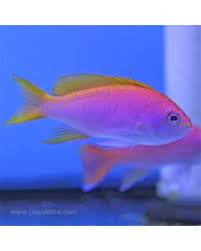Exploring the Mythical Dragons of Chinese Legends

Dragons hold an exceptional place in Chinese mythology, symbolizing power, wisdom, and a deep connection with the natural and spiritual world. Unlike the fearsome creatures often found in Western legends, Chinese dragons are revered as benevolent beings associated with good fortune, prosperity, and harmony. These dragons, however, are not a singular entity but come in various forms, each with unique attributes and roles in Chinese folklore. From celestial dragons to water dragons, the diversity of dragon types reflects the complexity and richness of Chinese mythological traditions.
In this article, we will delve into the different types of mythical dragons in Chinese legends, exploring their characteristics, roles, and symbolic meanings.
1. The Long (龙) – The Classic Chinese Dragon
The Long, often referred to simply as the Chinese dragon, is perhaps the most famous and widely recognized type of dragon in Chinese culture. It is a symbol of imperial power and prosperity, often associated with the emperor and the ruling class. The Long is typically depicted with a long, serpentine body, four legs, sharp claws, and a head adorned with antler-like horns and a flowing mane.
This dragon represents the harmony between heaven and earth, as well as the cyclical nature of life and seasons. It is often believed to control the elements, especially rain, and is regarded as a bringer of fertility and agricultural prosperity. The Long is deeply embedded in Chinese culture, appearing on imperial seals, monuments, and other significant artifacts.
In many myths, the Long is portrayed as a guardian of nature and the cosmic order. It embodies the strength to protect the land, and its intervention ensures balance in the universe. In imperial China, the emperor was often seen as the “Son of the Dragon,” with the dragon’s power symbolizing his divine right to rule.
2. The Fucanglong (伏藏龙) – The Dragon of Hidden Treasures
The Fucanglong, or “Hidden Treasure Dragon,” is a type of dragon associated with the earth and the guardianship of hidden treasures. It is believed that this dragon resides deep beneath the mountains and under the earth’s surface, guarding precious jewels, metals, and other valuable resources. The Fucanglong is depicted with a muscular body, sharp claws, and a treasure hoard that is usually invisible to human eyes.
In Chinese legends, this dragon’s role is to protect wealth, not only in the material sense but also in a spiritual one. It is often said that the Fucanglong is linked to the accumulation of fortune and prosperity, and those who are able to earn its favor will gain access to hidden wealth. The Fucanglong is often considered a symbol of abundance and success, particularly for merchants and those involved in trade.
3. The Tianlong (天龙) – The Celestial Dragon
The Tianlong, or “Heavenly Dragon,” is one of the most revered dragons in Chinese mythology. As its name suggests, this dragon is closely associated with the heavens and is often depicted as a divine, celestial being who resides in the sky or the heavens above. The Tianlong serves as a protector of the celestial realm, guarding the deities and ensuring the proper functioning of the universe.
In various myths, the Tianlong is portrayed as a powerful figure capable of commanding the forces of the universe. It is often said that the Tianlong can bring forth rain, thunder, and lightning, making it a symbol of divine intervention in the world. This dragon’s role extends beyond mere protection; it also symbolizes the connection between the earth and the heavens, maintaining the balance of cosmic forces.
The Tianlong is frequently associated with Buddhism in China, where it is depicted as a protector of Buddhist teachings and temples. In many artistic representations, the Tianlong is shown with a magnificent, radiant appearance, representing the spiritual light of the heavens.
4. The Shenlong (神龙) – The Spiritual Dragon
The Shenlong, or “Spiritual Dragon,” is a dragon closely linked to both the natural and spiritual realms. It is a dragon of immense power, often considered a bringer of blessings and fortune to those who seek spiritual enlightenment. Unlike other dragons, the Shenlong is said to have the ability to transcend the physical world and interact with the spiritual plane.
The Shenlong is often associated with rain and agriculture, as it is believed to control the weather and bring rainfall to dry lands. It is said that when the Shenlong roars, it can summon rain to nourish the crops, which is why it is particularly revered by farmers. In addition to this, the Shenlong is also a symbol of spiritual transformation and personal growth, with its power to guide people toward wisdom and enlightenment.
In many legends, the Shenlong is portrayed as a mediator between the divine and human realms, helping to guide individuals on their spiritual journeys. Its wisdom and ability to control natural forces make it a revered figure in both folklore and religious traditions.
5. The Yinglong (应龙) – The Winged Dragon
The Yinglong, or “Responding Dragon,” is a winged dragon often depicted as having the ability to fly through the sky. Unlike the other dragons, which are typically serpentine in form, the Yinglong has wings that allow it to traverse both the heavens and the earth. This dragon is often associated with power, speed, and agility, as it can swiftly respond to situations and provide aid when needed.
In Chinese mythology, the Yinglong is considered a hero dragon, often called upon to defend the country from enemies or to aid in times of natural disasters. It is also believed to be capable of bringing forth rain and ensuring the fertility of the land. The Yinglong has been symbolically linked to military strength and the protection of the state, as it is seen as a dragon who responds swiftly to the needs of the people.
The Yinglong is also associated with the element of water, particularly in the form of rain. As such, it plays a key role in ensuring the balance of the natural world by regulating water flow, floods, and droughts.
6. The Dilong (地龙) – The Earth Dragon
The Dilong, or “Earth Dragon,” is a type of dragon closely associated with the earth and underground forces. This dragon is said to inhabit the deep underground world, where it controls the movement of the earth and the flow of rivers beneath the surface. It is often portrayed as a force of stability, maintaining the balance of nature and the flow of energy within the earth.
The Dilong is often considered a guardian of natural resources, particularly those hidden beneath the earth’s surface, such as minerals and gemstones. It is also believed to have the ability to control earthquakes and other seismic events, symbolizing the power of the earth itself. In Chinese folklore, the Dilong is revered for its role in maintaining harmony within the natural world.
Conclusion: The Many Faces of the Chinese Dragon
The diversity of dragons in Chinese mythology reflects the complexity and depth of Chinese cultural beliefs. Each type of dragon—whether it is the celestial Tianlong, the spiritual Shenlong, or the protective Fucanglong—serves a unique role in the larger tapestry of Chinese folklore. These dragons are not only symbols of power and strength but also embody deeper meanings related to the natural world, spiritual wisdom, and the balance between humanity and the universe. From ancient tales to modern representations, the mythical dragons of China continue to captivate and inspire, offering insight into the values and beliefs that have shaped Chinese civilization for millennia.

